My GO TO…Saturation: Three Pros Share Their Secret Weapons
It’s time to dish out some dirt! This edition of the GO TO series is all about everything that’s unclean: Saturation, distortion and harmonics that make our drums gnarly, our vocals gritty or maybe just make our mix sound more “analog”.
When it comes to mixing, there are essentially two schools of thought these days: In the box or on the console. Many well-respected mixers, including some with long and celebrated careers on analog consoles have moved exclusively in the box for mixing duties. Of course, for some mixers analog still rules!
We’re going to talk to three different engineer/mixers with storied discographies who bring unique insights into the world of saturation from their work both in and out of “the box”.
So, let’s talk about: Saturation
I can still remember the very first time I discovered distortion as a means of creating music. I was sitting in my living room circa 1996 with my dad’s old 67’ Telecaster and a shiny new DOD Supra Distortion pedal. I said out loud “so THAT’S how they get that sound!”
Of course, I was only half right. Years later I would discover that so many of those pedals were merely emulating the brilliant sounds that come from turning a tube amp WAY up.
(Pause here for an extended tangent with a friend talking about all the amazingguitarpedals you used to be obsessed with as teenagers).
Today, guitar pedals have taken a back seat to outboard gear and plugins in my control room. I use saturation in various stages across my mix to affect individual tracks and groups, as well as to help my mix as a whole sound and feel as analog as possible.
Without exception, all of my drum tracks for the past four years have been treated with Mellowmuse SATV. SATV gives my drums this remarkable crunch and presence that is unlike any other harmonic based plugin I’ve ever heard.
SATV is one of a select few saturation-based plugins that contributes to every mix I do. It’s fantastic on just about any instrument you can imagine. SATV is armed with four emulations: Transformer, Transistor, Tube and Tape. You can read more about SATV in my review for Sonicscoop. As of this writing, Mellowmuse has begun releasing their vintage series plugins including SATV and CS1V for AAX 64 bit.
My other key piece of saturation is console emulation. My current go to is Slate Digital’s Virtual Console Collection or “VCC”. The VCC provides the overall glue to my mixes through a combination of harmonic “drive” and various console emulation flavors that can be used on a track-by-track basis to provide enhanced harmonic saturation and clarity.
Plugin developers have surely caught on to just how crucial harmonic saturation is to creating an analog feel for in-the-box mixing. A number of compressors in my arsenal such as Slate’s Virtual Bus Compressors and Softube’s TLA 100A all have saturation processing on board.
In fact, my entire mix bus in Pro Tools is variations of different types of harmonic saturation processing! Typically, my mix bus consists of Slate’s Virtual Buss Compressor into The Virtual Tape Machine into Izotope’s Ozone 5 which I use for the EQ, Stereo Imaging and Harmonic Exciter modules (set to tube).
I spoke with veteran engineers David Bendeth, Ryan Hewitt and Neil Dorfsman to get their thoughts on all things saturation.
GO TO Pro #1: David Bendeth
David Bendeth is a London-born producer, engineer, mixer and musician whose primary facility “House of Loud” is based around an SSL 4000 console in Elmwood Park, New Jersey. David’s impressive discography includes Paramore, Riot, Vertical Horizon, Bruce Hornsby, Papa Roach and Elvis Presley. Of the latter, je’s overseen the production, engineering and mixing of the “30 #1 Hits” album which has sold 14 million copies worldwide to date.
What’s your go to Saturation right now? Tell us what plugin in or hardware you find yourself reaching for a lot.
“Right now, I am loving the Gates comp and the ADR Gemini Easyrider comp. Tape is always the best solution for this effect though.
What do I really reach for? Easy, the SSL console. The truth is that the SSL 4K G breaks up really nicely with the master buss comp. There is a saturation point you encounter much like a Les Paul and a Marshall 100 watt amp. It is a sweet spot and when you get there, the room shakes. Mixing on this console and ganging the tracks creates the ultimate saturation.”
Why are you gravitating to it? Tell us what you like about it, and what you’re using it for (vocals, guitars, drums, etc…)
“The Gates I always use for the lead vocals. It gives it a nice edge and breaks up with the warmth still engaged due to all those tubes. I like the Gemini ADR comp because it’s a cheap piece of gear that sounds amazing when smashed hard, love it on background vocals or a stereo synth or piano. The SSL because nothing can touch the harmonic distortion that comes out with all the headroom.”
What’s a cool tip/technique you can share about using it? How can SonicScoop readers use this unit (or something like it) in their next project?
“Sometimes when you put these comps on a back Buss and bring them back on two rails, you can really push them hard and back off the original signal, making the most out of the effect.”
You can find out more about David at http://www.davidbendeth.com. Thanks David!
Hear a Saturation Master in action: David Bendeth mixed the brutal “Shadow Moses” single by Bring Me the Horizon (read more about this mix in depth in the SonicScoop Mix Analysis).

GO TO Pro #2: Ryan Hewitt
Ryan Hewitt’s career in audio began at the young age of twelve. Ryan worked on the Remote Recording Services trucks owned by his father, engineer Dave Hewitt for over fifteen years learning the trade of engineering for live recordings.
Ryan eventually moved to LA working at Cello Studios before breaking out on his own as a freelance engineer and mixer for a diverse list of artists like Red Hot Chili Peppers, The Avett Brothers, Harry Connick Jr., Sheryl Crow and many more. Recently Ryan has worked with Dan Wilson, Needtobreathe and Angust and Julia Stone.
Go to Saturation:
“My go-to saturation at the moment is SoundToys Decapitator. It’s got a great range of colors, dynamics and harmonics that it can impart to a track.”
Gravitational Pull:
“I use it on vocals to make a singer more aggressive or emotional sounding. I use it on electric guitars to add harmonic content to weak sounds. I like it on acoustics for distortion and tone shaping. On drums, I use Decapitator as a parallel send/return effect and send selected sounds to be distorted, then blended with the dry tracks. I’ve used it on horns to make them sound more old-timey and junky sounding. It’s definitely got a lot of functionality and I use it in every mix that I do.”
Tip:
“My favorite of these applications recently is on electric guitars. I’ve gotten a lot of really weak guitar sounds to mix recently, and using the Pentode mode of Decapitator has really helped me beef up these tracks and make them stand up to big drum sounds.
“Add drive and notice the change in harmonic content of the track. Try using the tone knob and filters to alter the high / low balance, tighten up the bottom end and smooth out the top. If you’ve got too much attitude, dial it back by blending in the dry signal with the wet/dry mix control.”
These are fantastic suggestions. You can find out more about Ryan Hewitt at http://www.ryanhewitt.com. Thanks Ryan!
GO TO Pro #3: Neil Dorfsman
Finally, I spoke to my good friend and two-time GRAMMY-winning producer, engineer and mixer Neil Dorfsman. Neil’s career began in earnest at Power Station in NYC (now Avatar) working as a staff engineer with the likes of Bob Clearmountain, Jason Corsaro, Scott Litt and many others. Neil and I met while I was assisting at The Hit Factory. Together, we spent many months at the now defunct Saint Claire Recording Company in Lexington, Kentucky working on a number of artists and drinking more than our fair share of bourbon.
Currently, Neil is based in La Jolla, California with his family where he has a mix room.
Any recent projects you want to mention?
“I’m about to work with a French artist named Himiko whose music is very adventurous – it brings to my mind a bit of Bjork, Fiona Apple and St. Vincent and has a really beautiful signature sound.”
What’s your go to saturation right now?
“I am actually using a lot of the Mellowmuse SATV (at Zach’s suggestion), as well as my old standby Sansamp and Decapitator. Those three generally give me what I’m looking for. I will use both the Sansamp plug-in as well the original hardware piece.
“If I can, I will also use my very funky, old Trowbridge tube mic-pre as an insert and reprint the processed signal. It’s got a ton of headroom and can be hard to distort, but sometimes it’s just perfect for adding a bit of smooth analog overdrive and thickness.
“When I get the very rare chance, I will try and use the (Thermionic Culture) Culture Vulture, which I find can be a slightly more ‘high-end’ approach to “lo-fi”.”
Why are you gravitating to it?
“Well, the SATV is quite easy to set up and has a few, well-designed variations, as does Decapitator. Sansamp offers radical processing with a ton of possibilities. The Culture Vulture appeals to my ‘tweaky’ side, as it provides a large spectrum of styles and options.”
What’s a cool tip/technique you can share about using it?
“Obvious distortion can easily be overused, and requires a bit of self-discipline to not lose perspective. My only suggestion for a ‘tip’ is to try blending in parallel distortion, especially on your drum mix. This may be quite obvious to everyone by now, but you can subtly (or not so subtly) add a submix (varying kinds and/or amounts) of distortion to enhance the power and tone of the drums without it being obvious. You feel it but don’t exactly hear it.
“Years ago I stumbled upon this during an analog mix when I forgot to normal some distortion busses on the SSL that were being used for a backing vocal effect and the drum sub-mix wound up being sent to them. It became a happy mistake which I then started employing regularly. This is also great for electric bass (Sansamp), vocals (Sansamp), keyboards (Decapitator) and percussion (Decapitator).
I would also add that if you’re working on a vintage Neve, those transformer mic pres distort in a really nice way. They sound great if you crank them, keeping the fader down in the ‘minus 30’ range (and not necessarily in ‘record mode’).”
You can find out more about Neil at http://www.neildorfsman.com. Thanks Nelly!
Parallel Info
You’ve heard a couple variations on working with tracks in “parallel” over the course of this article. For those who don’t know, parallel processing occurs when you take a set of tracks and buss them through a processor such as a compressor or in this case a distortion box or plugin like Decapitator and return the processed sound back to a new set of faders.
The processed sound is then blended with the original sound. This often creates a very enriched and harmonically full sound depending on the depth of the processing on the parallel bus. I often use parallel compression techniques on my drums and vocal tracks. Just remember that if you’re attempting parallel processing inside your DAW, always make sure you have delay compensation engaged as your tracks will sound phasey without it.
Whether you’re working primarily in a DAW, or more in the traditional analog realm, saturation will always be a means of adding color and texture to your tracks and your mixes.
Remember that sometimes, the best sounds can come from a complete accident! So, crank it up until the room shakes and make some noise!
— Zach McNees is a Brooklyn-based producer/engineer/mixer and live recordist who’s worked with Björk, Rob Thomas, Julia Nunes, The Gregory Brothers, Pixies, Liars and Alice Cooper. Get in touch with Zach via http://www.zachmcnees.com.
Please note: When you buy products through links on this page, we may earn an affiliate commission.







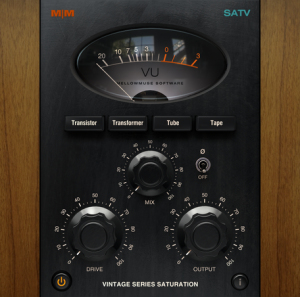
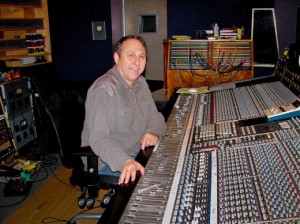
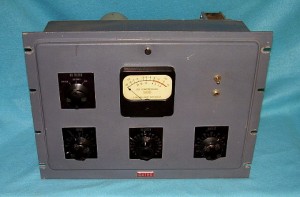
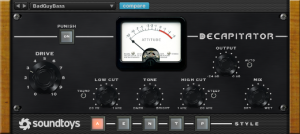
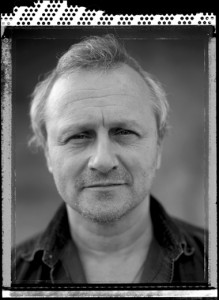
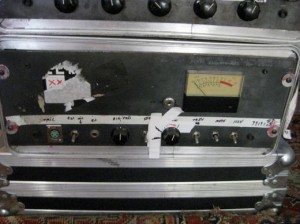
Heavy Empty
June 22, 2014 at 7:10 am (11 years ago)great article, thanks zach!
Zach McNees
June 26, 2014 at 5:23 am (11 years ago)Thank you kindly!